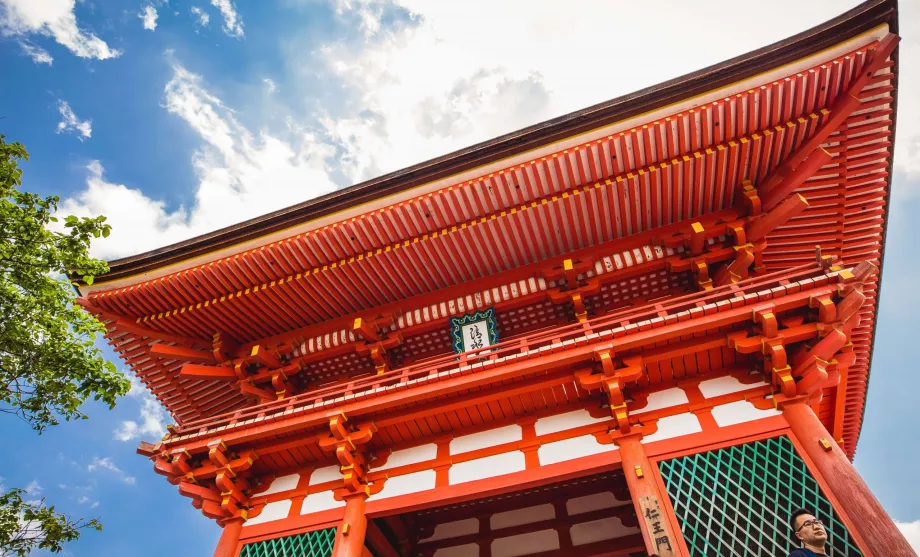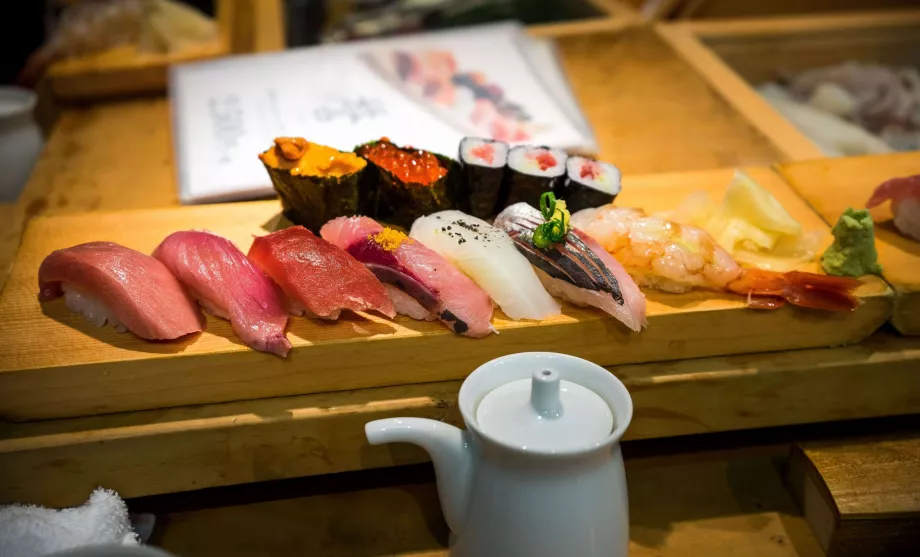Traditional food in Japan

What food should you try in Japan? What is most commonly sold in local restaurants?
Buy tickets to Japan in advance
Japanese cuisine
Because Japan is a seasonal country, you can sample something different in almost every month of your stay. The most you can come across:
soba noodles - buckwheat noodles that are served cold in the summer months (zaru soba) or warm in the winter months. One of the basic variants is kake soba (buckwheat noodles with broth).
Udon noodles - thick wheat noodles of a yellowish colour served as soba noodles.
Noodle ramen - ramen soup can generally be prepared in many ways, the noodles are egg noodles Chinese style, but ramen is so popular in Japan that locals take it as their own. The most important thing about ramen is the broth, its production is usually secret, so each ramen restaurant offers a different flavor broth, even if it is the same dish. Besides broth and noodles, there are vegetables and meat in different ways.
Gyoza - stuffed bags of meat and vegetables, steamed or fried.
Tempura - vegetables, seafood and fish coated in a similar way to the tri-wrap, but the result is noticeably crispier.
Sushi - mostly raw fish with rice and seaweed. Typical sushi is a roll of rice and meat coated with seaweed and is called maki. Rice with fish on top is nigiri. The slices of raw fish themselves are called sashimi.
Natto - fermented soybeans that are light brown in color. They have a very pungent smell and a typically strong taste, foreigners often cannot even taste them because of the strong smell. However, they are very healthy!
Bentó - lunch box, basically a little bit of everything. It is typical to buy bentos for the train or shinkazen, they sell them right on the platforms.
Senbei - rice crackers covered in soy sauce and seaweed, similar to the famous "Japanese mix" here.
Teas - sencha typical green tea, genmaicha - green time with roasted rice, mugicha - barley tea, matcha powdered tea with a bitter taste used mainly in tea ceremonies and as a flavouring for sweets, etc.
Alcohol - sake - rice wine, a typical Japanese alcohol. Shouchu - Japanese sweet potato spirit. Beer - Asahi, Sapporo, Kirin, Yebisu, ...
Candy and sweets - traditional sweets are made from rice flour, starch and anko sweet beans.
What not to do when eating
Do not stick chopsticks into the rice, but place them on the bowl. Chopsticks are only stuck into rice during funeral rituals.
Do not stick chopsticks in sushi, it is very rude. It is common to eat sushi with your hands if you don't know how to use chopsticks. In Japan, on the other hand, sushi is eaten with the hands by true connoisseurs and gourmets.
Don't pass food from chopsticks to chopsticks, it evokes another Buddhist funeral ritual, that of taking bones.
How to eat like a local
Eating at local restaurants is safe. Japanese hygiene standards are among the highest in the world.
Local self-service eateries are ubiquitous, where you order at a kiosk, pay with a card and get a simple but usually good and, most importantly, very cheap meal.
These bistros are very popular among the Japanese for breakfast and dinner menus.
Any questions left?
If you have any questions or comments about the article...


